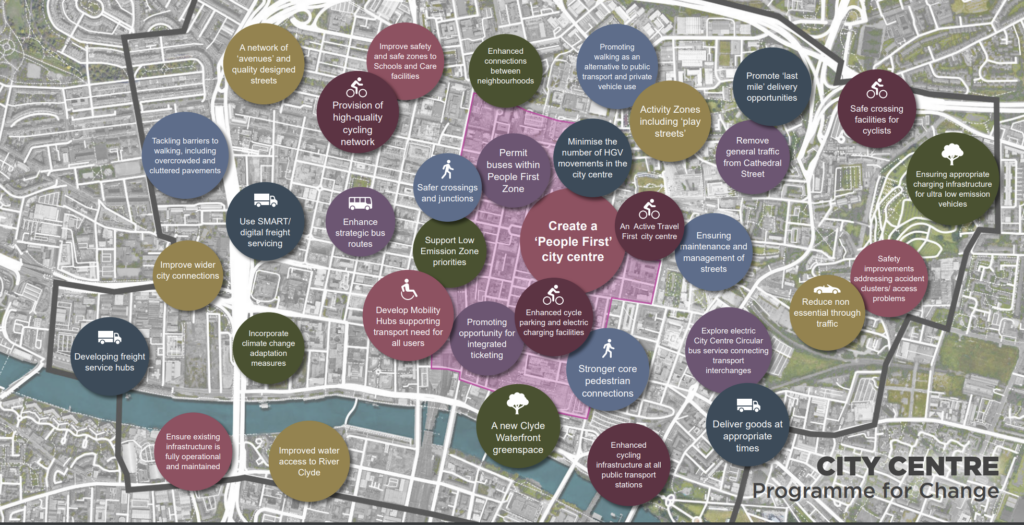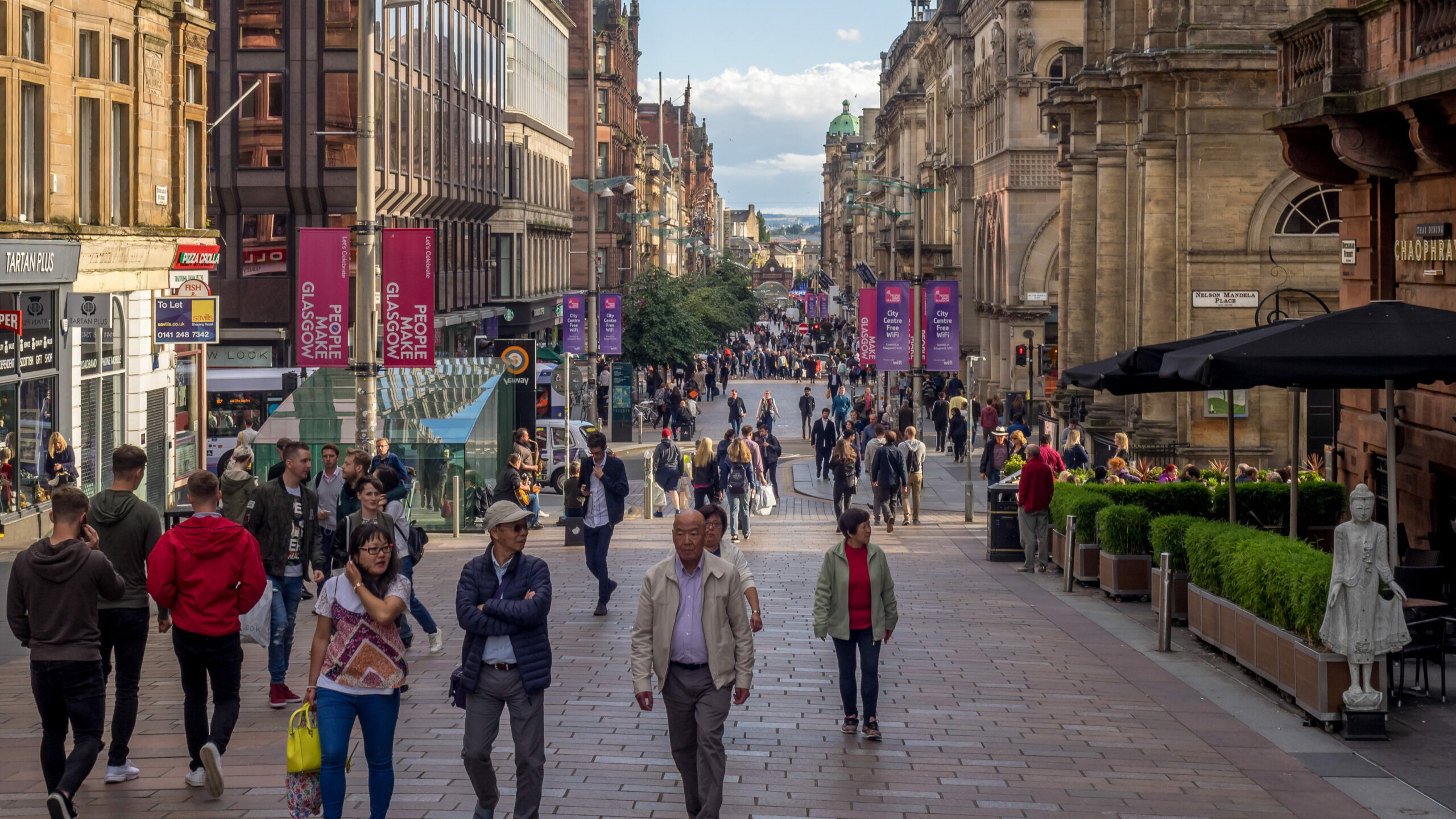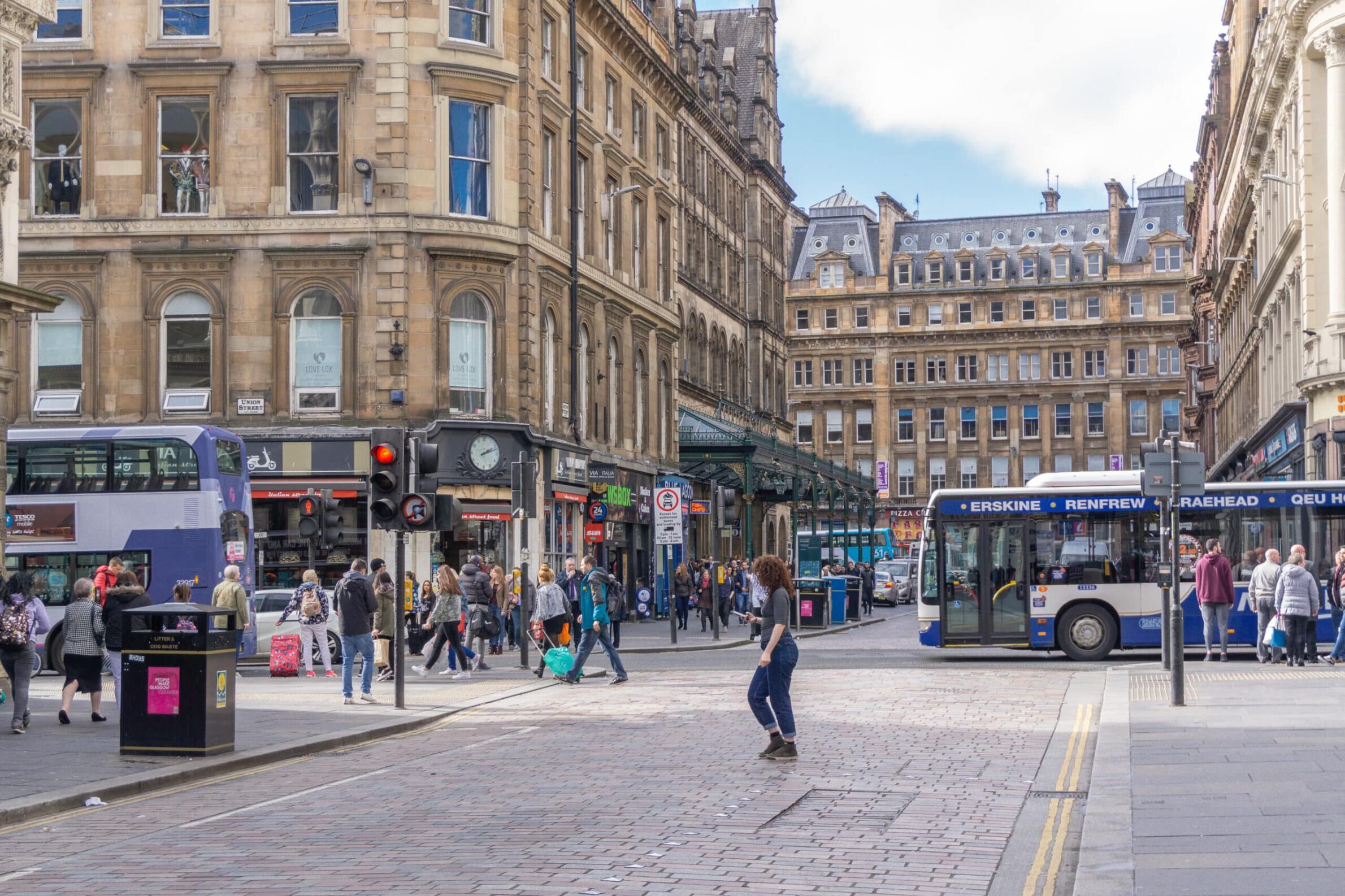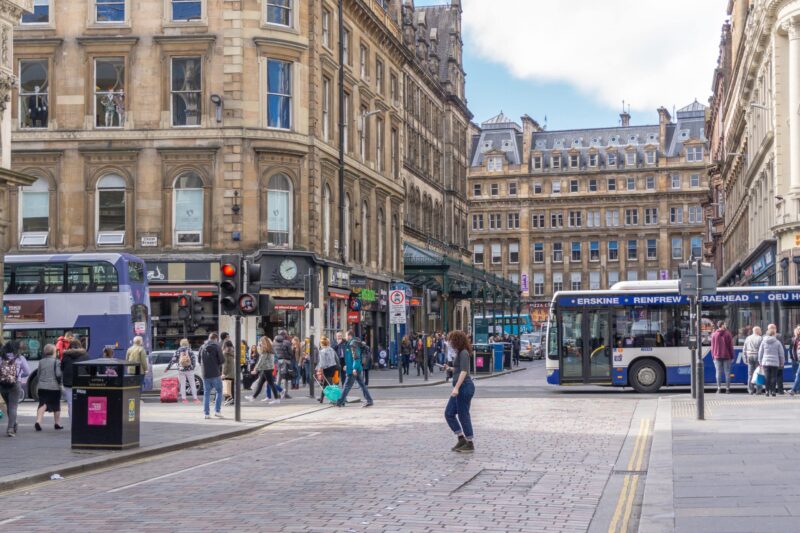Creating a successful and sustainable Glasgow
The National Performance Framework is a Scottish Government initiative, aiming to create a more successful forward looking country through giving more opportunities to people living in Scotland.
This will be done by increasing people’s wellbeing, creating sustainable and inclusive growth and reducing inequalities. Equal importance will be given to economic, environmental and social progress. We worked with Glasgow City Council on its City Centre Transport Plan (CCTP) to assist the city’s aim to be carbon neutral by 2030, as well as supporting the predicted doubling of Glasgow city centre’s population by 2035.
Encouraging sustainable transport
Glasgow City Council want to deliver an improved public transport system which encourages a shift to more sustainable modes, particularly walking, cycling and public transport, through re-allocating road space within the city centre for active travel and green infrastructure, as well as improving access for the mobility impaired.
Creating a sustainable transport transformation could achieve a 30-40% reduction in peak-hour private car traffic in the city centre by 2030, as well as delivering improvements for the delivery of goods and for servicing waste collection, which will improve the vitality of the City centre.

Supporting public transport improvements
Our study with Glasgow City Council worked towards making the city function better for all users, including those with restricted mobility, by reducing the need to travel. By 2030 it aims to dramatically reduce the need to access the city centre by car by 30% through encouraging more journeys on foot, by cycling and greater use of public transport through service improvements.
By prioritising quality place-making and the power of design to enhance and provide public greenspace, SYSTRA helped to develop a ‘People First’ city centre concept which is safe, accessible and has quality streetscapes with low vehicular access and intrusion.
Our vision of Low Emission Zone for Glasgow will help promote zero tail pipe fleet and vehicular emissions, and the development of mobility hubs. It will encourage shared transport, will reduce the need to own a car and will accelerate Glasgow City Council’s decarbonisation programme which includes improving air quality and the adverse environmental impacts from car transport.
Achieving growth through developing a strong inclusive economy
Striving to develop a strong, inclusive and successful local economy was a key priority. We worked with all stakeholders to promote behavioural change including the business community and residents. This was done through an intensive programme of education and engagement.
Working in close partnership with Glasgow City Council and other key stakeholders means that we were able to deliver a better informed and responsive programme for the City. We wanted to add significant value with smart, well-targeted engagement programme methodology.

Avoiding consultation fatigue by complimenting existing work
The Engagement Strategy informed the initial ‘Options Appraisal’ report which complemented work done to date and avoided consultation fatigue. The study was undertaken in accordance with the Scottish Transport Appraisal Guidance (STAG) and proposed a range of engagement tools to ensure meaningful input and active participation from all stakeholders.
These tools include a Communication & Engagement Plan, regular key stakeholder briefings, topic area workshops, online virtual engagement through the I:ENGAGE platform, and client reporting.
Facing the challenge
The study focused on developing sustainable transport solutions for Glasgow City Centre, but faced several challenges due to limited face-to-face engagement with stakeholders (due to COVID). We needed to consider remote engagement, the long-term effects of the pandemic on travel behaviour, and the emissions-related impacts of measures including the Low Emission Zone. Highly detailed transport modelling and baselines for different years were required to inform the design and appraisal of the proposed solutions.
Problem solving through engagement
Our Communication & Engagement Plan has served as a valuable framework and tracker for all engagement activities, while key stakeholder briefings provide context and invite initial input.
The topic area workshops and online engagement sessions allowed stakeholders to review and contribute to problem-solving and option selection.
Our team regularly reported progress to the Client Steering Group, and the final report was been submitted for public consultation and council adoption. Collaboration with Glasgow City Council was crucial for identifying and validating options that integrated transportation and place making.

- services
Social Impacts and Equity in Transport
Read more sur Social Impacts and Equity in Transport
- markets
Local Transport
Read more sur Local Transport
- services


 Australia
Australia  Brazil
Brazil  Canada
Canada  Chile
Chile  China
China  Columbia
Columbia  Denmark
Denmark  France
France  India
India  Indonesia
Indonesia  Italy
Italy  Malaysia
Malaysia  New Zealand
New Zealand  Norway
Norway  Panama
Panama  Peru
Peru  Poland
Poland  Portugal
Portugal  Saudi Arabia
Saudi Arabia  Singapore
Singapore  South Korea
South Korea  Spain
Spain  Sweden
Sweden  Taiwan
Taiwan  Thailand
Thailand  Türkiye
Türkiye  United Kingdom
United Kingdom  United States
United States  Vietnam
Vietnam